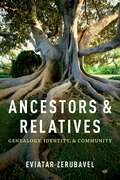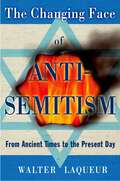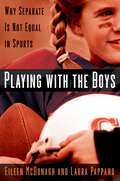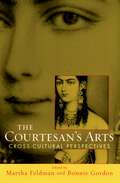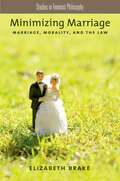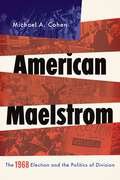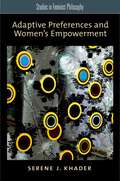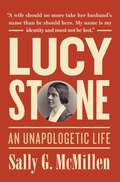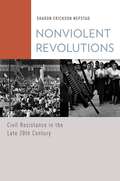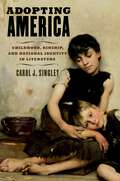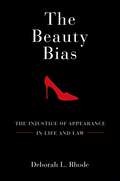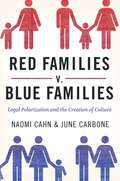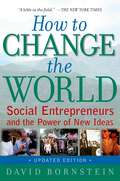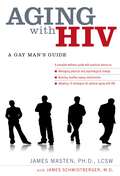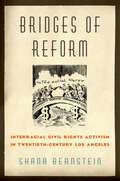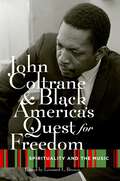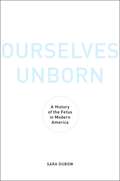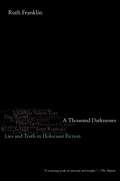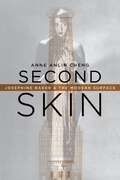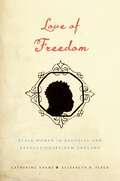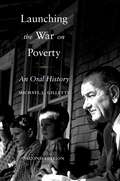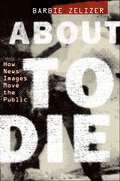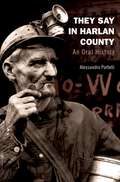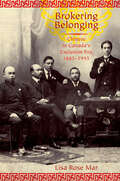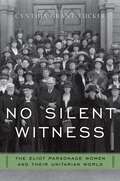- Table View
- List View
Ancestors and Relatives: Genealogy, Identity, and Community
by Eviatar ZerubavelGenealogy has long been one of humanity's greatest obsessions. But with the rise of genetics, and increasing media attention to it through programs like Who Do You Think You Are? and Faces of America, we are now told that genetic markers can definitively tell us who we are and where we came from. The problem, writes Eviatar Zerubavel, is that biology does not provide us with the full picture. After all, he asks, why do we consider Barack Obama black even though his mother was white? Why did the Nazis believe that unions of Germans and Jews would produce Jews rather than Germans? In this provocative book, he offers a fresh understanding of relatedness, showing that its social logic sometimes overrides the biological reality it supposedly reflects. In fact, rather than just biological facts, social traditions of remembering and classifying shape the way we trace our ancestors, identify our relatives, and delineate families, ethnic groups, nations, and species. Furthermore, genealogies are more than mere records of history. Drawing on a wide range of evidence, Zerubavel introduces such concepts as braiding, clipping, pasting, lumping, splitting, stretching, and pruning to shed light on how we manipulate genealogies to accommodate personal and collective agendas of inclusion and exclusion. Rather than simply find out who our ancestors were and identify our relatives, we actually construct the genealogical narratives that make them our ancestors and relatives. An eye-opening re-examination of our very notion of relatedness, Ancestors and Relatives offers a new way of understanding family, ethnicity, nationhood, race, and humanity. "An erudite treatise about how culture drives human cognition about near and remote relatives, Ancestors and Relatives offers lay and academic audiences alike a great read."-Science "The author examines how genealogical structures have been used to organize not only kinship, but also other domains ranging from Supreme Court justices to religions. Genealogy is 'first and foremost a way of thinking' and not simply a way to represent biological ancestor-descendant relations."-CHOICE "In Ancestors and Relatives: Genealogy, Identity, and Community, Eviatar Zerubavel, a sociologist at Rutgers, pulls back the curtain on the genealogical obsession. Genealogies, he argues, aren't the straightforward, objective accounts of our ancestries we often presume them to be. Instead, they're heavily curated social constructions, and are as much about our values as they are about the facts of who gave birth to whom."-The Boston Globe "Making the world seem strange is the first step to understanding it anew. Eviatar Zerubavel is a genius at doing this. Here he takes on kinship and shows us the profound, politically fraught, sometimes frightening, and often funny ways in which we take the biological fact that life creates life and fashion genealogy from it. This is a brilliant, witty, effortlessly well-informed book that anyone with ancestors or anyone who worries about ethnicity, race, and nationalism will read with pleasure and surprise."-Thomas Laqueur, University of California, Berkeley "While ancestors and relatives are genetically given, the genetics give us no clue how we should measure their relative importance to us. In this lively and well-written book, Eviatar Zerubavel avoids the aridity of technical kinship analysis and uses a personal perspective to show how humans fabricate, in the literal sense, their relatives, by a creative process of elimination and selection in the generation of rules. It is easily the most engaging introduction to kinship for the general reader that I have read, and a contribution in its own right to a wider understanding of our place in evolution."-Robin Fox, author of Kinship and Marriage and The Tribal Imagination "Kinship is a perennial staple-necessary but ordinarily dry as dust-of anthropology, sociology, and demography. In Ancestors and Relatives, Eviatar Zerubavel makes the topic new, bringing to it an encyclopedic knowledge and a powerful sociologica
The Changing Face of Anti-Semitism: From Ancient Times to the Present Day
by Walter LaqueurFor thirty years the director of the Wiener Library in London--the leading institute for the study of anti-Semitism--Walter Laqueur here offers both a comprehensive history of anti-Semitism as well as an illuminating look at the newest wave of this phenomenon. Laqueur begins with an invaluable historical account of this pernicious problem, tracing the evolution from a predominantly religious anti-Semitism--stretching back to the middle ages--to a racial anti-Semitism that developed in the late 19th and early 20th centuries. The author then uses this historical account as backdrop to a brilliant analysis of the newest species of anti-Semitism, explaining its origins and rationale, how it manifests itself, in what ways and why it is different from anti-Semitism in past ages, and what forms it may take in the future. The book reveals that what was historically a preoccupation of Christian and right-wing movements has become in our time even more frequent among Muslims and left-wing groups. Moreover, Laqueur argues that we can't simply equate this new anti-Semitism with anti-Zionism and write it off as merely anti-Israel sentiments. If Israel alone is singled out for heated condemnation, is the root of this reaction simply anti-Zionism or is it anti-Semitism? Here is both a summing up of the entire trajectory of anti-Semitism--the first comprehensive history of its kind--and an exploration of the new wave of anti-Semitism. "Walter Laqueur provides us with powerful new insights into an age-old problem. Distinguished scholarship and an authoritative moral voice are the hallmarks of this important book. Anyone wanting to understand the history and persistence of anti-Jewish hatred should read it." --Abraham H. Foxman, National Director, Anti-Defamation League
Playing With the Boys: Why Separate is Not Equal in Sports
by Eileen McDonagh Laura PappanoAthletic contests help define what we mean in America by "success." By keeping women from "playing with the boys" on the false assumption that they are inherently inferior, society relegates them to second-class citizens. In this forcefully argued book, Eileen McDonagh and Laura Pappano show in vivid detail how women have been unfairly excluded from participating in sports on an equal footing with men. Using dozens of powerful examples--girls and women breaking through in football, ice hockey, wrestling, and baseball, to name just a few--the authors show that sex differences are not sufficient to warrant exclusion in most sports, that success entails more than brute strength, and that sex segregation in sports does not simply reflect sex differences, but actively constructs and reinforces stereotypes about sex differences. For instance, women's bodies give them a physiological advantage in endurance sports, yet many Olympic events have shorter races for women than men, thereby camouflaging rather than revealing women's strengths.
The Courtesan's Arts: Cross-Cultural Perspectives
by Martha Feldman Bonnie GordonCourtesans, hetaeras, tawaif-s, ji-s--these women have exchanged artistic graces, elevated conversation, and sexual favors with male patrons throughout history and around the world. Of a different world than common prostitutes, courtesans deal in artistic and intellectual pleasures in ways that are wholly interdependent with their commerce in sex. In pre-colonial India, courtesans cultivated a wide variety of artistic skills, including magic, music, and chemistry. In Ming dynasty China, courtesans communicated with their patrons through poetry and music. Yet because these cultural practices have existed primarily outside our present-day canons of art and have often occurred through oral transmission, courtesans' arts have vanished almost without trace. The Courtesan's Arts delves into this hidden legacy, unveiling the artistic practices and cultural production of courtesan cultures with a sideways glance at the partly-related geisha. Balancing theoretical and empirical research, this interdisciplinary collection is the first of its kind to explore courtesan cultures through diverse case studies--the Edo period and modern Japan, 20th-century Korea, Ming dynasty China, ancient Greece, early modern Italy, and India, past and present. Each essay puts forward new perspectives on how the arts have figured in the courtesan's survival or demise. Though performative and often flamboyant, courtesans have been enigmatic and elusive to their beholders--including scholars. They have shaped cultures through art, yet their arts, often intangible, have all but faded from view. Often courtesans have hovered in the crevices of space, time, and practice--between gifts and money, courts and cities, feminine allure and masculine power, as substitutes for wives but keepers of culture. Reproductively irrelevant, they have tended to be ambiguous figures, thriving on social distinction while operating outside official familial relations. They have symbolized desirability and sophistication yet often been reviled as decadent. The Courtesan's Arts shows that while courtesans cultures have appeared regularly in various times and places, they are universal neither as a phenomenon nor as a type. To the contrary, when they do crop up, wide variations exist. What binds together courtesans and their arts in the present-day post-industrialized world of global services and commodities is their fragility. Once vital to cultures of leisure and pleasure, courtesans are now largely forgotten, transformed into national icons or historical curiosities, or reduced to prostitution.
Minimizing Marriage: Marriage, Morality, and the Law (Studies in Feminist Philosophy)
by Elizabeth BrakeEven in secular and civil contexts, marriage retains sacramental connotations. Yet what moral significance does it have? This book examines its morally salient features -- promise, commitment, care, and contract -- with surprising results. In Part One, "De-Moralizing Marriage," essays on promise and commitment argue that we cannot promise to love and so wedding vows are (mostly) failed promises, and that marriage may be a poor commitment strategy. The book contends with the most influential philosophical accounts of the moral value of marriage to argue that marriage has no inherent moral significance. Further, the special value accorded marriage sustains amatonormative discrimination - discrimination against non-amorous or non-exclusive caring relationships such as friendships, adult care networks, polyamorous groups, or urban tribes. The discussion raises issues of independent interest for the moral philosopher such as the possibilities and bounds of interpersonal moral obligations and the nature of commitment. The central argument of Part Two, "Democratizing Marriage," is that liberal reasons for recognizing same-sex marriage also require recognition of groups, polyamorists, polygamists, friends, urban tribes, and adult care networks. Political liberalism requires the disestablishment of monogamous amatonormative marriage. Under the constraints of public reason, a liberal state must refrain from basing law solely on moral or religious doctrines; but only such doctrines could furnish reason for restricting marriage to male-female couples or romantic love dyads. Restrictions on marriage should thus be minimized. But public reason can provide a strong rationale for minimal marriage: care, and social supports for care, are a matter of fundamental justice. Part Two also responds to challenges posed by property division on divorce, polygyny, and supporting parenting, and builds on critiques of marriage drawn from feminism, queer theory, and race theory. It argues, using the example of minimal marriage, for the compatibility of liberalism and feminism.
American Maelstrom: The 1968 Election and the Politics of Division (Pivotal Moments in World History)
by Michael A. CohenIn his presidential inaugural address of January 1965, Lyndon B. Johnson offered an uplifting vision for America, one that would end poverty and racial injustice. Elected in a landslide over the conservative Republican Barry Goldwater and bolstered by the so-called liberal consensus, economic prosperity, and a strong wave of nostalgia for his martyred predecessor, John F. Kennedy, Johnson announced the most ambitious government agenda in decades. Three years later, everything had changed. Johnson's approval ratings had plummeted; the liberal consensus was shattered; the war in Vietnam splintered the nation; and the politics of civil rights had created a fierce white backlash. A report from the National Committee for an Effective Congress warned of a "national nervous breakdown." The election of 1968 was immediately caught up in a swirl of powerful forces, and the nine men who sought the nation's highest office that year attempted to ride them to victory-or merely survive them. On the Democratic side, Eugene McCarthy energized the anti-war movement; George Wallace spoke to the working-class white backlash; Robert Kennedy took on the mantle of his slain brother. Entangled in Vietnam, Johnson, stunningly, opted not to run again, scrambling the odds. On the Republican side, 1968 saw the vindication of Richard Nixon, who outhustled Nelson Rockefeller, Ronald Reagan, and George Romney by navigating between the conservative and moderate wings of the Republican Party. The assassinations of the first Martin Luther King, Jr., and then Kennedy, seemed to push the country to the brink of chaos, a chaos reflected in the Democratic Convention in Chicago, a televised horror show. Vice President Hubert Humphrey emerged as the nominee, and, finally liberating himself from Johnson's grip, nearly overcame the lead long enjoyed by Nixon, who, by exploiting division and channeling the national yearning for order, would be the last man standing. In American Maelstrom, Michael A. Cohen captures the full drama of this watershed election, establishing 1968 as the hinge between the decline of political liberalism, the ascendancy of conservative populism, and the rise of anti-governmental attitudes that continue to dominate the nation's political discourse. In this sweeping and immersive book, equal parts compelling analysis and thrilling narrative, Cohen takes us to the very source of our modern politics of division.
Adaptive Preferences and Women's Empowerment (Studies in Feminist Philosophy)
by Serene J. KhaderKhader offers a deliberative perfectionist approach to identifying and responding to adaptive preferences-- deprived people's preferences that perpetuate their deprivation. She argues that adaptive preferences are deficits in flourishing that are causally related to deprivation and claims that intervention aimed at transforming them is compatible with respect for persons and cultures.
Lucy Stone: An Unapologetic Life
by Sally G. McMillenIn the rotunda of the nation's Capital a statue pays homage to three famous nineteenth-century American women suffragists: Elizabeth Cady Stanton, Susan B. Anthony, and Lucretia Mott. "Historically," the inscription beneath the marble statue notes, "these three stand unique and peerless." In fact, the statue has a glaring omission: Lucy Stone. A pivotal leader in the fight for both abolition and gender equality, her achievements marked the beginning of the women's rights movement and helped to lay the groundwork for the eventual winning of women's suffrage. Yet, today most Americans have never heard of Lucy Stone. Sally McMillen sets out to address this significant historical oversight in this engaging biography. Exploring her extraordinary life and the role she played in crafting a more just society, McMillen restores Lucy Stone to her rightful place at the center of the nineteenth-century women's rights movement. Raised in a middle-class Massachusetts farm family, Stone became convinced at an early age that education was key to women's independence and selfhood, and went on to attend the Oberlin Collegiate Institute. When she graduated in 1847 as one of the first women in the US to earn a college degree, she was drawn into the public sector as an activist and quickly became one of the most famous orators of her day. Lecturing on anti-slavery and women's rights, she was instrumental in organizing and speaking at several annual national woman's rights conventions throughout the 1850s. She played a critical role in the organization and leadership of the American Equal Rights Association during the Civil War, and, in 1869, cofounded the American Woman Suffrage Association, one of two national women's rights organizations that fought for women's right to vote. Encompassing Stone's marriage to Henry Blackwell and the birth of their daughter Alice, as well as her significant friendships with Frederick Douglass, Susan B. Anthony, and others, McMillen's biography paints a complete picture of Stone's influential and eminently important life and work. Self-effacing until the end of her life, Stone did not relish the limelight the way Elizabeth Cady Stanton did, nor did she gain the many followers whom Susan B. Anthony attracted through her extensive travels and years of dedicated work. Yet her contributions to the woman's rights movement were no less significant or revolutionary than those of her more widely lauded peers. In this accessible, readable, and historically-grounded work, Lucy Stone is finally given the standing she deserves.
Nonviolent Revolutions: Civil Resistance in the Late 20th Century (Oxford Studies in Culture and Politics)
by Sharon Erickson NepstadIn the spring of 1989, Chinese workers and students captured global attention as they occupied Tiananmen Square, demanded political change, and were tragically suppressed by the Chinese army. Months later, East German civilians rose up nonviolently, brought down the Berlin Wall, and dismantled their regime. Although both movements used tactics of civil resistance, their outcomes were different. Why? In Nonviolent Revolutions, Sharon Erickson Nepstad examines these and other uprisings in Panama, Chile, Kenya, and the Philippines. Taking a comparative approach that includes both successful and failed cases of nonviolent resistance, Nepstad analyzes the effects of movements' strategies along with the counter-strategies regimes developed to retain power. She shows that a significant influence on revolutionary outcomes is security force defections, and explores the reasons why soldiers defect or remain loyal and the conditions that increase the likelihood of mutiny. She then examines the impact of international sanctions, finding that they can at times harm movements by generating new allies for authoritarian leaders or by shifting the locus of power from local civil resisters to international actors. Nonviolent Revolutions offers essential insights into the challenges that civil resisters face and elucidates why some of these movements failed. With a recent surge of popular uprisings across the Middle East, this book provides a valuable new understanding of the dynamics and potency of civil resistance and nonviolent revolt.
Adopting America: Childhood, Kinship, and National Identity in Literature
by Carol J. SingleyAmerican literature abounds with orphans who experience adoption or placements that resemble adoption. These stories do more than recount adventures of children living away from home. They tell an American story of family and national identity. In narratives from the seventeenth to the early twentieth century, adoption functions as narrative event and trope that describes the American migratory experience, the impact of Calvinist faith, and the growth of democratic individualism. The roots of literary adoption appear in the discourse of Puritan settlers, who ambivalently took leave of their birth parent country and portrayed themselves as abandoned children. Believing they were chosen children of God, they also prayed for spiritual adoption and emulated God's grace by extending adoption to others. Nineteenth-century adoption literature develops from this notion of adoption as salvation and from simultaneous attachments to the Old World and the New. In domestic fiction of the mid-nineteenth century, adoption also reflects a focus on nurture in childrearing, increased mobility in the nation, and middle-class concerns over immigration and urbanization, assuaged when the orphan finds a proper, loving home. Adoption signals fresh starts and the opportunity for success without genealogical constraints, especially for white males, but inflected by gender and racial biases, it often entails dependency for girls and children of color. A complex signifier of difference, adoption gives voice to sometimes contradictory calls to origins and fresh beginning; to feelings of worthiness and unworthiness. In writings from Cotton Mather to Edith Wharton, it both replicates and offers an alternative to the genealogical norm, evoking ambivalence as it shapes national mythologies.
The Beauty Bias: The Injustice Of Appearance In Life And Law
by Deborah L. RhodeThe Injustice Of Appearance In Life And Law
Red Families v. Blue Families: Legal Polarization and the Creation of Culture
by June Carbone Naomi CahnRed Families v. Blue Families identifies a new family model geared for the post-industrial economy. Rooted in the urban middle class, the coasts and the "blue states" in the last three presidential elections, the Blue Family Paradigm emphasizes the importance of women's as well as men's workforce participation, egalitarian gender roles, and the delay of family formation until both parents are emotionally and financially ready. By contrast, the Red Family Paradigm--associated with the Bible Belt, the mountain west, and rural America--rejects these new family norms, viewing the change in moral and sexual values as a crisis. In this world, the prospect of teen childbirth is the necessary deterrent to premarital sex, marriage is a sacred undertaking between a man and a woman, and divorce is society's greatest moral challenge. Yet, the changing economy is rapidly eliminating the stable, blue collar jobs that have historically supported young families, and early marriage and childbearing derail the education needed to prosper. The result is that the areas of the country most committed to traditional values have the highest divorce and teen pregnancy rates, fueling greater calls to reinstill traditional values. Featuring the groundbreaking research first hailed in The New Yorker, this penetrating book will transform our understanding of contemporary American culture and law. The authors show how the Red-Blue divide goes much deeper than this value system conflict--the Red States have increasingly said "no" to Blue State legal norms, and, as a result, family law has been rent in two. The authors close with a consideration of where these different family systems still overlap, and suggest solutions that permit rebuilding support for both types of families in changing economic circumstances. Incorporating results from the 2008 election, Red Families v. Blue Families will reshape the debate surrounding the culture wars and the emergence of red and blue America.
How to Change the World: Social Entrepreneurs and the Power of New Ideas, Updated Edition
by David BornsteinNow published in more than twenty countries, David Bornstein's How to Change the World has become the bible for social entrepreneurship--in which men and women around the world are finding innovative solutions to a wide variety of social and economic problems. Whether delivering solar energy to Brazilian villagers, expanding work opportunities for disabled people across India, creating a network of home-care agencies to serve poor people with AIDS in South Africa, or bridging the college-access gap in the United States, social entrepreneurs are pioneering problem-solving models that will reshape the 21st century. How to Change the World provides vivid profiles of many such individuals and what they have in common. The book is an In Search of Excellence for social initiatives, intertwining personal stories, anecdotes, and analysis. Readers will discover how one person can make an astonishing difference in the world. The case studies in the book include Jody Williams, who won the Nobel Peace Prize for the international campaign against landmines she ran by e-mail from her Vermont home; Roberto Baggio, a 31-year old Brazilian who has established eighty computer schools in the slums of Brazil; and Diana Propper, who has used investment banking techniques to make American corporations responsive to environmental dangers. The paperback edition will offer a new foreword by the author that shows how the concept of social entrepreneurship has expanded and unfolded over the last few years, including the Gates-Buffetts charitable partnership, the rise of Google, and the increased mainstream coverage of the subject. The book will also update the stories of individual social entrepreneurs that appeared in the cloth edition.
Aging with HIV: A Gay Man's Guide
by James MastenWith improvements in the treatment of HIV disease, gay men in great numbers are surviving--and thriving--into middle and older age. While increased longevity brings new hope, it also raises unanticipated challenges, particularly for gay men who never thought they would live this long: How do I deal with all the physical changes? Who can I rely on as I get older? Is a relationship still in the cards for me? What about sex? How should I prepare for old age? A one-of-a-kind guide for gay men aging with HIV, Aging with HIV offers an upbeat, down-to-earth approach for adapting to change, whether driven by age, AIDS, or both. Psychotherapist James Masten and physician James Schmidtberger shed light on the many common assumptions and fears of aging with HIV. Aging with HIV provides concrete solutions for facing midlife with a positive outlook, offering a wealth of advice for breaking unhealthy habits and coping mechanisms. The book describes the nine changes common to gay men as they age with HIV, discusses the four challenges of aging, and offers a unique ten-step path to optimal aging with HIV, helping the reader to tailor the book's suggestions to the realities of their lives. Woven throughout the book are first-person narratives from men who recount what worked--and did not work--for them. In addition, Rapid Research, Fast Fact, and Self-Reflection boxes highlight the latest research and challenge readers to take stock of the present--and plan for the future. An invaluable tool to keep handy and to refer to often, Aging with HIV is an inviting, confident companion to navigating midlife and beyond with HIV.
Bridges of Reform: Interracial Civil Rights Activism in Twentieth-Century Los Angeles
by Shana BernsteinIn her first book, Shana Bernstein reinterprets U.S. civil rights activism by looking at its roots in the interracial efforts of Mexican, African, Jewish, and Japanese Americans in mid-century Los Angeles. Expanding the frame of historical analysis beyond black/white and North/South, Bernstein reveals that meaningful domestic activism for racial equality persisted from the 1930s through the 1950s. She stresses how this coalition-building was facilitated by the cold war climate, as activists sought protection and legitimacy in this conservative era. Emphasizing the significant connections between ethno-racial communities and between the United States and world opinion, Bridges of Reform demonstrates the long-term role western cities like Los Angeles played in shaping American race relations.
John Coltrane and Black America's Quest for Freedom: Spirituality and the Music
by Leonard L. BrownEdited by prominent musician and scholar Leonard Brown, John Coltrane and Black America's Quest for Freedom: Spirituality and the Music is a timely exploration of Coltrane's sound and its spiritual qualities that are rooted in Black American music-culture and aspirations for freedom. A wide-ranging collection of essays and interviews featuring many of the most eminent figures in Black American music and jazz studies and performance --Tommy Lee Lott, Anthony Brown, Herman Gray, Emmett G. Price III, Tammy Kernodle, Salim Washington, Eric Jackson, TJ Anderson ,Yusef Lateef, Billy Taylor, Olly Wilson, George Russell, and a never before published interview with Elvin Jones -- the book examines the full spectrum of Coltrane's legacy. Each work approaches this theme from a different angle, in both historical and contemporary contexts, focusing on how Coltrane became a quintessential example of the universal and enduring qualities of Black American culture.
Ourselves Unborn: A History of the Fetus in Modern America
by Sara DubowDuring the past several decades, the fetus has been diversely represented in political debates, medical textbooks and journals, personal memoirs and autobiographies, museum exhibits and mass media, and civil and criminal law. Ourselves Unborn argues that the meanings people attribute to the fetus are not based simply on biological fact or theological truth, but are in fact strongly influenced by competing definitions of personhood and identity, beliefs about knowledge and authority, and assumptions about gender roles and sexuality. In addition, these meanings can be shaped by dramatic historical change: over the course of the twentieth century, medical and technological changes made fetal development more comprehensible, while political and social changes made the fetus a subject of public controversy. Moreover, since the late nineteenth century, questions about how fetal life develops and should be valued have frequently intersected with debates about the authority of science and religion, and the relationship between the individual and society. In examining the contested history of fetal meanings, Sara Dubow brings a fresh perspective to these vital debates.
A Thousand Darknesses: Lies and Truth in Holocaust Fiction
by Ruth FranklinWhat is the difference between writing a novel about the Holocaust and fabricating a memoir? Do narratives about the Holocaust have a special obligation to be 'truthful'--that is, faithful to the facts of history? Or is it okay to lie in such works? In her provocative study A Thousand Darknesses, Ruth Franklin investigates these questions as they arise in the most significant works of Holocaust fiction, from Tadeusz Borowski's Auschwitz stories to Jonathan Safran Foer's postmodernist family history. Franklin argues that the memory-obsessed culture of the last few decades has led us to mistakenly focus on testimony as the only valid form of Holocaust writing. As even the most canonical texts have come under scrutiny for their fidelity to the facts, we have lost sight of the essential role that imagination plays in the creation of any literary work, including the memoir. Taking a fresh look at memoirs by Elie Wiesel and Primo Levi, and examining novels by writers such as Piotr Rawicz, Jerzy Kosinski, W.G. Sebald, and Wolfgang Koeppen, Franklin makes a persuasive case for literature as an equally vital vehicle for understanding the Holocaust (and for memoir as an equally ambiguous form). The result is a study of immense depth and range that offers a lucid view of an often cloudy field.
Second Skin: Josephine Baker & the Modern Surface
by Anne Anlin ChengThrough the figure of Josephine Baker, Second Skin tells the story of an unexpected yet enduring intimacy between the invention of a modernist style and the theatricalization of black skin at the turn of the twentieth century. Stepping outside of the platitudes surrounding this iconic figure, Anne A. Cheng argues that Baker's famous nakedness must be understood within larger philosophic and aesthetic debates about, and desire for, 'pure surface' that crystallized at the convergence of modern art, architecture, machinery, and philosophy. Through Cheng's analysis, Baker emerges as a central artist whose work engages with and impacts various modes of modernist display such as film, photography, art, and even the modern house.
Love of Freedom: Black Women in Colonial and Revolutionary New England
by Elizabeth H. Pleck Catherine AdamsThey baked New England's Thanksgiving pies, preached their faith to crowds of worshippers, spied for the patriots during the Revolution, wrote that human bondage was a sin, and demanded reparations for slavery. Black women in colonial and revolutionary New England sought not only legal emancipation from slavery but defined freedom more broadly to include spiritual, familial, and economic dimensions. Hidden behind the banner of achieving freedom was the assumption that freedom meant affirming black manhood The struggle for freedom in New England was different for men than for women. Black men in colonial and revolutionary New England were struggling for freedom from slavery and for the right to patriarchal control of their own families. Women had more complicated desires, seeking protection and support in a male headed household while also wanting personal liberty. Eventually women who were former slaves began to fight for dignity and respect for womanhood and access to schooling for black children.
Launching the War on Poverty: An Oral History (Oxford Oral History Series)
by Michael L. GilletteHead Start, Job Corps, Foster Grandparents, College Work-Study, VISTA, Community Action, and the Legal Services Corporation are familiar programs, but their tumultuous beginning has been largely forgotten. Conceived amid the daring idealism of the 1960s, these programs originated as weapons in Lyndon Johnson's War on Poverty, an offensive spearheaded by a controversial new government agency. Within months, the Office of Economic Opportunity created an array of unconventional initiatives that empowered the poor, challenged the established order, and ultimately transformed the nation's attitudes toward poverty. In Launching the War on Poverty, historian Michael L. Gillette weaves together oral history interviews with the architects of the Great Society's boldest experiment. Forty-nine former poverty warriors, including Sargent Shriver, Adam Yarmolinsky, and Lawrence F. O'Brien, recount this inside story of unprecedented governmental innovation. The interviews capture the excitement and heady optimism of Americans in the 1960s along with their conflicts and disillusionment. This new edition of Launching the War on Poverty adds the voice of Lyndon Johnson to the story with excerpts from his recently-released White House telephone conversations. In these colorful and brutally candid conversations, LBJ exercises his full arsenal of presidential powers, political leverage, and legendary persuasiveness to win one of his most difficult legislative battles. The second edition also documents how the OEO's offspring survived their volatile origins to become broadly supported features of domestic policy.
About to Die: How News Images Move the Public
by Barbie ZelizerDue to its ability to freeze a moment in time, the photo is a uniquely powerful device for ordering and understanding the world. But when an image depicts complex, ambiguous, or controversial events--terrorist attacks, wars, political assassinations--its ability to influence perception can prove deeply unsettling. Are we really seeing the world "as it is" or is the image a fabrication or projection? How do a photo's content and form shape a viewer's impressions? What do such images contribute to historical memory? About to Die focuses on one emotionally charged category of news photograph--depictions of individuals who are facing imminent death--as a prism for addressing such vital questions. Tracking events as wide-ranging as the 1906 San Francisco Earthquake, the Holocaust, the Vietnam War, and 9/11, Barbie Zelizer demonstrates that modes of journalistic depiction and the power of the image are immense cultural forces that are still far from understood. Through a survey of a century of photojournalism, including close analysis of over sixty photos, About to Die provides a framework and vocabulary for understanding the news imagery that so profoundly shapes our view of the world.
They Say in Harlan County: An Oral History (Oxford Oral History Series)
by Alessandro PortelliMade famous in the 1976 documentary Harlan County USA, this pocket of Appalachian coal country has been home to generations of miners--and to some of the most bitter labor battles of the 20th century. It has also produced a rich tradition of protest songs and a wealth of fascinating culture and custom that has remained largely undiscovered by outsiders, until now. They Say in Harlan County is not a book about coal miners so much as a dialogue in which more than 150 Harlan County women and men tell the story of their region, from pioneer times through the dramatic strikes of the 1930s and '70s, up to the present. Alessandro Portelli draws on 25 years of original interviews to take readers into the mines and inside the lives of those who work, suffer, and often die in them--from black lung, falling rock, suffocation, or simply from work that can be literally backbreaking. The book is structured as a vivid montage of all these voices--stoic, outraged, grief-stricken, defiant--skillfully interwoven with documents from archives, newspapers, literary works, and the author's own participating and critical voice. Portelli uncovers the whole history and memory of the United States in this one symbolic place, through settlement, civil war, slavery, industrialization, immigration, labor conflict, technological change, migration, strip mining, environmental and social crises, and resistance. And as hot-button issues like mountain-top removal and the use of "clean coal" continue to hit the news, the history of Harlan County--especially as seen through the eyes of those who lived it--is becoming increasingly important. With rare emotional immediacy, gripping narratives, and unforgettable characters, They Say in Harlan County tells the real story of a culture, the resilience of its people, and the human costs of coal mining.
Brokering Belonging: Chinese in Canada's Exclusion Era, 1885-1945
by Lisa Rose MarBrokering Belonging traces several generations of Chinese "brokers," ethnic leaders who acted as intermediaries between the Chinese and Anglo worlds of Canada. Before World War II, most Chinese could not vote and many were illegal immigrants, so brokers played informal but necessary roles as representatives to the larger society. Lisa Rose Mar's study of Chinatown leaders shows how politics helped establish North America's first major group of illegal immigrants. Drawing on new Chinese language evidence, her dramatic account of political power struggles over representing Chinese Canadians offers a transnational immigrant view of history, centered in a Pacific World that joins Canada, the United States, China, and the British Empire.
No Silent Witness: The Eliot Parsonage Women and Their Unitarian World (Religion in America)
by Cynthia Grant TuckerThis group biography follows three generations of ministers' daughters and wives in a famed American Unitarian family. Cynthia Tucker examines the Eliots, their religious tradition, and the Eliot women's largely neglected female vocation. Spanning 150 years from the early 19th century forward, the narrative is shaped into a series of stories. Each of six chapters takes up a different woman's experience, from the deaths of numerous children and the anguish of infertility to the suffocation of small parish life with its chronic loneliness, doubt, and resentment.
